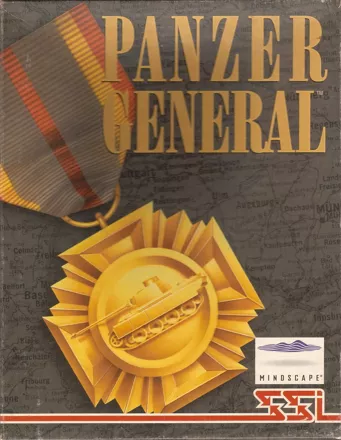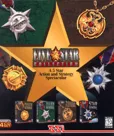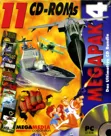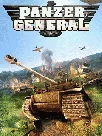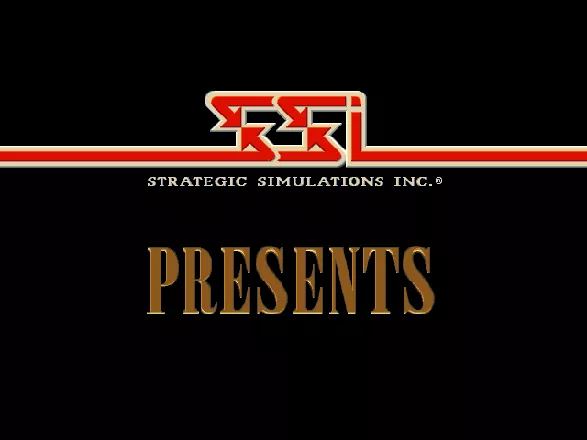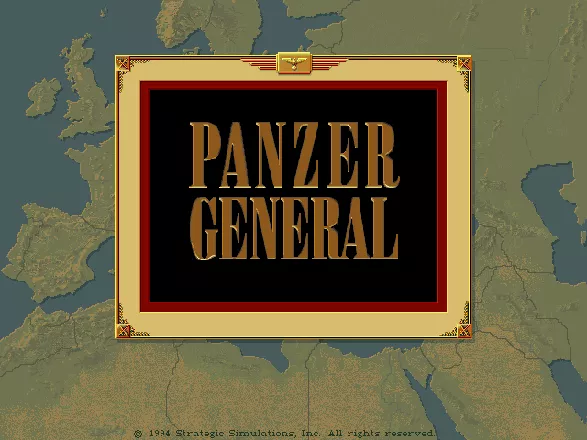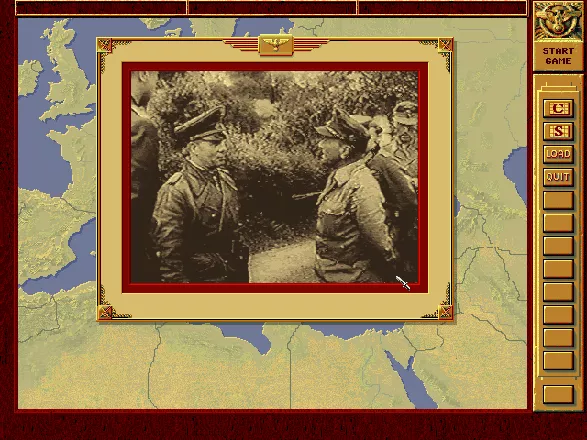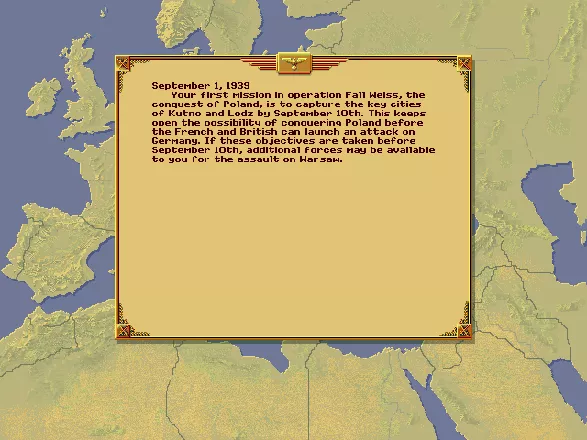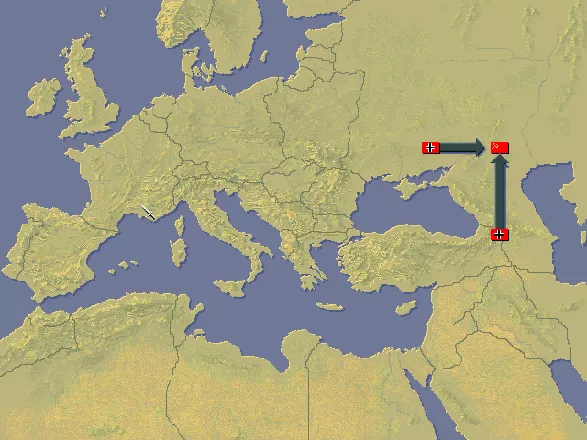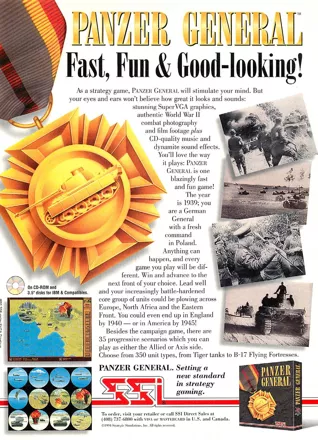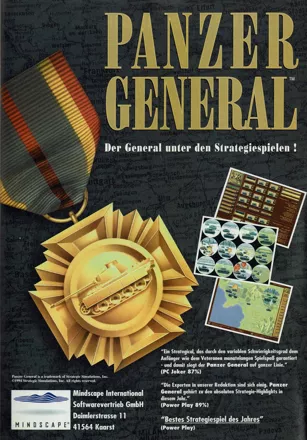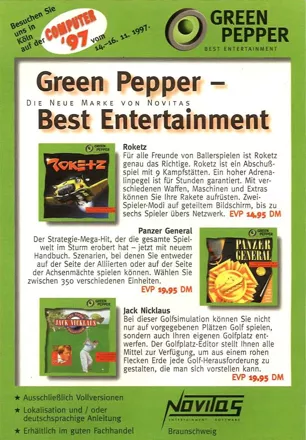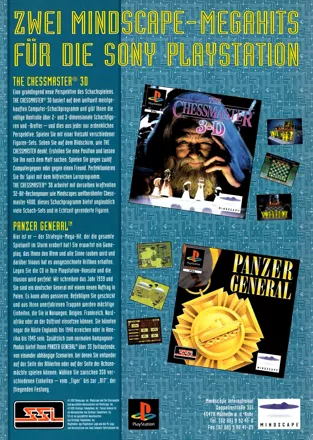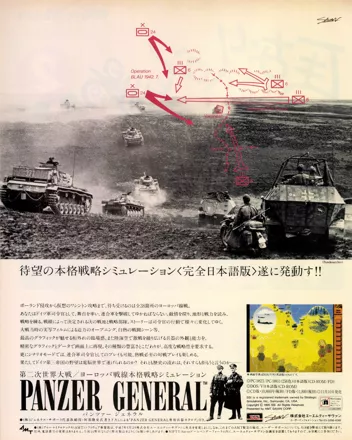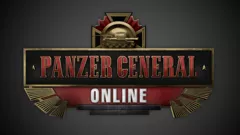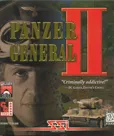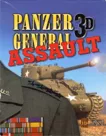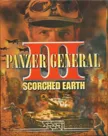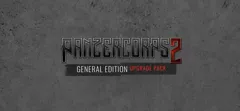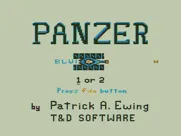Panzer General
Description official descriptions
The time for resurrecting historical events has come. Panzer General was one of the first games (if not the first) that actually gave you the ability to play for the Nazis, and yet succeed where Hitler failed. Having total and complete control over land, sea, and air units, you must defeat the Allied dogs as fast as you can (to get a major victory), or slower than in history (to get a minor victory).
The game's quality lies in the number of units. There are basically hundreds of Axis and Allied units from World War II, accompanied with "circled" animations and battle sounds, as well as marching or moving sounds. The Main menu is always located on the right side of the screen, with plenty of options and selections you can change to suit your preferences.
A turn-based hexagon strategy game that will actually go faster if you have a faster computer, but will always be playable (speed doesn't go up to infinity). The first and original Panzer General, this installment would be followed by sequels and many other games in the series using the "General" name.
Groups +
Screenshots
Promos
Credits (DOS version)
54 People (43 developers, 11 thanks) · View all
| Programmer | |
| Artist | |
| Producer | |
| Associate Producer | |
| Additional Associate Producers | |
| Campaign Design | |
| Scenario Design | |
| Audio Programming Director | |
| Audio Programmer | |
| Music | |
| Map Design | |
| Test Supervisor | |
| Lead Product Testers | |
| Product Testers | |
| Test Support | |
| [ full credits ] | |
Reviews
Critics
Average score: 81% (based on 31 ratings)
Players
Average score: 3.7 out of 5 (based on 72 ratings with 4 reviews)
The Good
I REALLY believe this Game is one of Playstation's hidden jewels that mostly gets overlooked all the time by others because it's a Port on a PC franchise and it's a Strategy Game.However,if you're either a World War Two buff or a fan of Strategy Games(or both),you'll be hard pressed to find a better Game of this type on a Console.The story is immediately familiar because it's based on actual battles in World War Two.And even some ' what if ' battles that will make you salivate from the possibilities.There's Hundreds of Unit types to choose for your Core Army you control and gain Experience through out the Game with.The Battle maps are large and provide challenges to your overall Strategy.You have battle Animations for all Units or choose to turn them off.You can also choose a Hex overview of the Map or a regular View.The Voice acting is really quite hilarious to listen to before a battle.Scenarios of all the battles are always available for play. All Metals and Accomplishments are tracked throughout your Campaigns.And a Directory of all Unit types can be Referenced.
The Bad
There's not much I didn't like on this Game,however there were a few sore spots.The Music is catchy at first,but after awhile it becomes intolerable,and regularly cuts in and out anyway.The cursor occasionally wigs out on you and can't be controlled easily.Every time you select something on a menu,it makes an annoying shooting sound that gets nerve racking.And you can't play Scenarios with your Campaign Army.
The Bottom Line
A turn based Strategy Game of the German Army's Battles throughout Europe and the U.S. between 1939-1945.
PlayStation · by wade hampton (7) · 2005
Though more a "strategy" than "wargame" title, the game that brought wargames back from the brink
The Good
This was both a seminal game in two different ways, and a very fun, engaging game to play. At the time, the "strategy game" and "war game" genres were very distinct. Wargames strove for technical and historical accuracy in the recreation of real-world and hypothetical conflicts; games with fictional themes and looser simulations were "strategy" games, and generally games that couldn't fit the "wargame" criteria would go all-out and use fantasy or SF setups. This game broke through that dichotomy, using a historical conflict and including as much realistic simulation as would fit without compromising the accessibility of the fun. It also broke the mold for both genres by putting some effort into aesthetics, especially visuals.
The result was a breakthrough game, which not only appealed to the fans of both genres but to a broader market as well. It was a great deal of fun to play, with an engaging element of personal involvement (the player earned and spent "prestige" to simulate the sort of favor with higher command that gains extra reinforcements, prototype units, and chances to pursue daring operations) and enough realism to reward realistic tactics without deep bogs of detail for the casual player.
The Bad
At the time, I didn't have a lot to complain about in the game. There were a few bugs and a couple of available exploits (which don't matter much in a single-player game). Along with everybody else, I wanted the chance to play the Allies in a campaign, which had to wait for the followup game, Allied General. (A sad disappointment when it arrived, but only of tangential bearing here.)
The Bottom Line
This was a doubly, or maybe triply, seminal game. It bridged the ideological gap between the "wargame" and "strategy game" genres, but it also managed to be accessible and fun to the broader market of more casual players without disappointing those who already liked these styles of games.
The third innovation is more sociological than directly game-related. This game broke new ground by putting the player in the role of an Axis - in fact, a Nazi - general, This was a great idea for game play, because the Allied side had been played to death, in nearly every possible incarnation, already. The developers judged that we have gained some historical distance from WWII, and can examine the military side of the conflict separately from the moral and ideological sides. That said, if you would be uncomfortable in the role of a Nazi commander invading France, you would need to steer clear of this game for that reason - and that one alone, as it is a fine, fun game.
DOS · by weregamer (155) · 2004
The first truely strategic wargame, and lots of fun to boot!
The Good
I don't know what it is about human nature, but why do we like playing the underdog so much? I mean even when it's and underdog that was represented by what is perhaps the most evil man in history? I don't know why, but I love playing the Germans!
And boy can you do that in Panzer General. Not only can you re-enact famous battles, the branching "storyline" allows you to build on your past victories and end up battling for Washington itself. Add to this an encyclopedic selection of weapons and units, and this is the wargamer's dream come true.
Panzer General is a turn based game. By today's standards this would be seen as a bad thing, but when you're moving so many units (it's not uncommon to have 50 or so) there's really no other way to do it.
Moreover, it doesn't use simultaneous movement. In many wargames both sides enter their moves at the same time, and then all movement occurs. In Panzer General the German side moves, then the allies. Thus rewards far-reaching thrusts to capture important points - typically cities. Cities and other strategic points award you with "prestige", which can later be traded for new or upgraded units. So if you capture those points, you not only gain points for yourself, but remove them for the other side.
Upgrading is one of the keys to the game. At the beginning of every scenario you have a chance to upgrade your units, and YOU MUST. By the end of the game you'll need to be using the latest of everything, or you'll be crushed by the huge numbers of allied units.
The other key is experience. Units gain experience in combat depending on "how well" they do. In some cases, like artillery, it may take a long time for units to built up experience points (from 0 to 499). These points are vital though, a single 400 point unit may be the replacement for four or five 100 point units. Zero point units are almost incapable of combat, except in supported defense. Managing the battlefield thus requires you to move damaged but experienced units to the rear, losing that unit is very costly in strategic terms.
Battle damage is also replaced by using up prestige. In this case you have two options, normal replacements, or experienced replacements. The former have no experience, and the overall experience of the unit is averaged. The later do not lower the experience, but cost much more. Use nothing but experienced replacements!
So as the game continues, you need to carfully dole out replacements to units. Don't do it too much though, or you'll run out of points to upgrade them. This balance is the hardest part of the game in the long run.
Units start out with "ten units" of strength. Combat can damage a unit, which then requires replacements. A unit can be brought to "overstrength" by adding addition replacements over 10, up to the experience divided by 100 (rounded up). For instance a unit with 220 experience points can be brought to 13 units of power, 10 for the normal strength and another 3 for the experience. These overstrength units will walk over almost anything in their way, their odds in combat are amazing.
Mixing units can also be important, because of the way "combinations" are used. For instance an attack by enemy fighters on a Stuka unit can wipe them out no matter how experienced they are. However if you have a fighter unit within one square, they will defend in a sneak attack, and typically do terrible damage to the attackers. An even more important combination is with land units, artilery and either infantry or an anti-tank unit. When the later is attacked, the artillery will help out and again the attacker is typically massacered.
By the end of the game you'll find yourself being overwhelmed by numbers. This is where the last careful balancing act comes in. Do you spend those points on upgrading that panzer to the new Panther, or by buying a new Panther unit fresh from training? Either way has it's good and bad points.
The Bad
The biggest flaw with Panzer General is that it has no real concept of supply lines beyond the most basic. As a result the grand sweeping move that is what makes the Blitzkreig work simply don't do anything at all. Sure, you can run past the front lines and deep into the heart of France, but this has zero effect on those units defending the cities where you started.
This has a number of spin-off effects, all of them bad. For one you need to have a large enough number of forces to be able to attack every strongpoint in a mission. This is counter to the entire concept! Another problem this cause, and MUCH mroe annoying, is that if you leave even one city in enemy hands behind the front, the allies will start "buying" new units at that city. If you have a real front line, you can find the entire map being overrun from a single 2nd line city. This frustrates me to no end.
The other problem is that unless you completely destroy a unit outright, the computer always seems to have enough points to rebuilt it. As a resul if you do one-unit attacks on the computer, you can find youself repeatedly smashing the same unit over and over again for the entire mission. You need to have enough units close enough for every attack to hit the defenders repeatedly, or they'll just come back again, and again, and again. This doesn't work for you however, as the computer always seems to be able to pull off perfect attacks every time, and you never seem to have the points to replace as fast as they do.
Finally by the end of the game the tanks run over the rest of the units in the game. So much so that with the exception of a few artillery units for softening up defenses, and perhaps an AA or two to protect them, everything is tanks, tanks and more tanks. More tuning of the various attack and defense numbers was needed here, a problem they fixed almost perfectly in Pacific General.
The Bottom Line
The classic turn-based strategic wargame. Nice to look at, fun to look over, and a riot to play.
DOS · by Maury Markowitz (266) · 2001
Trivia
Inspiration
According to SSI designer Chuck Kroegel, the Japanese strategy series Daisenryaku was the primary inspiration for the non-traditional wargame design of Panzer General. Says Kroegel: "I can honestly say that if we hadn't played Daisen Raiku (sic), Panzer General would never have happened, period." [Retro Gamer magazine, Load 43]
German index
On 29 June 1996, the DOS version of Panzer General was put on the infamous German index by the BPjS. This only applies to the original version, which had a problem with the manual; re-releases with a modified manual and the other platform releases are not effected.
For more information about what this means and to see a list of games sharing the same fate, take a look here: BPjS / BPjM indexed games.
German release
The German release does not contain a front and back cover. A sticker with rating information and EAN code is attached directly to the jewel case.
Awards
- Computer Gaming World
- May 1995 (Issue #130) – Wargame of the Year
- May 1995 (Issue #130) – Best Voice-Over Acting (for Barry Lank's performance as commanding officer)
- November 1996 (15th anniversary issue) - #15 in 150 Best Games of All Time" list
- November 1996 (15th anniversary issue) – #8 Best Way To Die In Computer Gaming (getting shot after failing a mission)
- September 1997 (Issue #157) – Introduced into the Hall of Fame* GameStar (Germany)
- Issue 12/1999 - #46 in the "100 Most Important PC Games of the Nineties" ranking
- PC Gamer
- April 2005 issue - #42 in the 50 Best Games of All Time list
- Power Play
- Issue 02/1995 – Best Strategy Game in 1994
Information also contributed by Andrew Grasmeder and Xoleras.
Analytics
Upgrade to MobyPro to view research rankings and price history! (when applicable)
Identifiers +
Contribute
Are you familiar with this game? Help document and preserve this entry in video game history! If your contribution is approved, you will earn points and be credited as a contributor.
Contributors to this Entry
Game added by MAT.
Macintosh added by Kabushi. PC-98 added by Terok Nor. 3DO added by Mullet of Death. PlayStation added by Jeanne.
Additional contributors: PCGamer77, Cantillon, Patrick Bregger, Plok, Rainer S.
Game added July 27, 2000. Last modified November 10, 2024.


